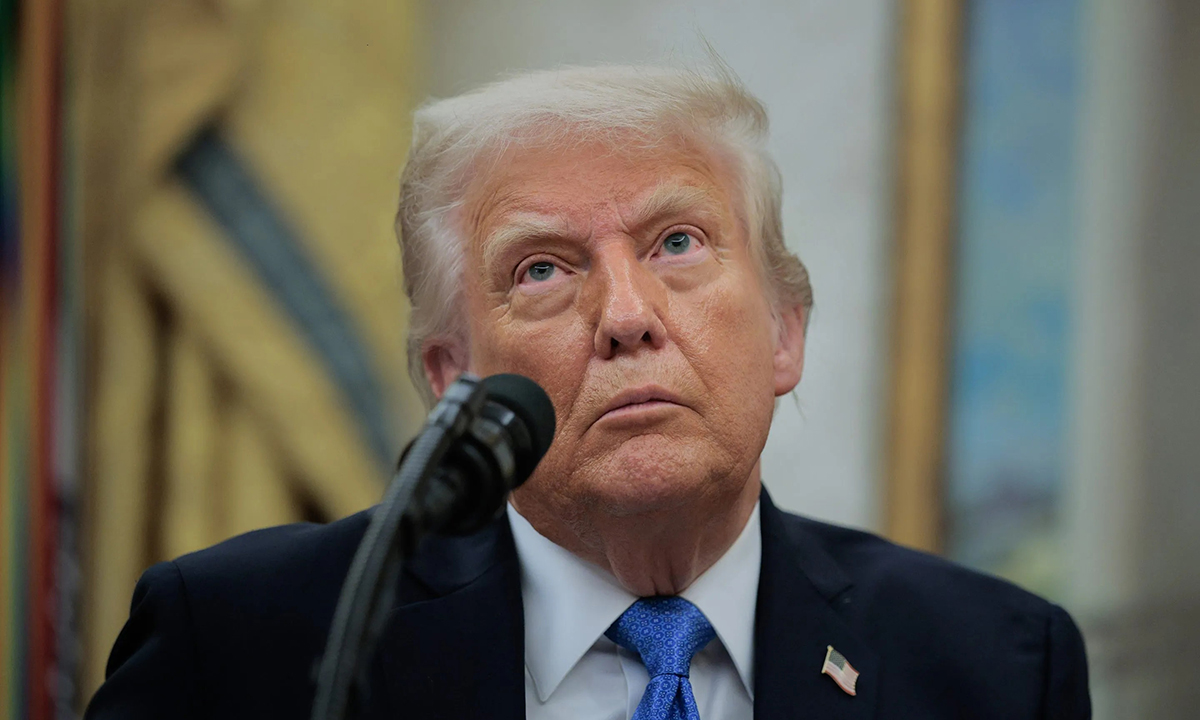
• 美国国债激增,当前已突破36.2万亿美元,引发经济学家及穆迪(Moody’s)等评级机构的日益担忧。穆迪近期下调美国信用评级,核心忧虑在于经济增长速度跟不上债务与利息支出的攀升速度。
经济学家批评政界提出的减债计划力度不足且为时已晚。但分析人士警示,这一隐患正逐渐反噬美国经济——对美国未来财政前景曾经坚不可摧的信心已开始瓦解。
美国的国债规模如今超过36.2万亿美元,正日益引起经济学家们的担忧。他们担心,随着国家债务负担及偿债利息支出同步攀升,美国经济增速将不足以维持财政开支。
此类担忧在穆迪上周将美国信用评级从Aaa下调至Aa1的举动中得到印证。穆迪解释称:“尽管我们承认美国具有强大的经济金融实力,但我们认为这些优势已不足以完全抵消财政指标的恶化。”
尽管美国财长斯科特·贝森特宣称市场无需过度关注穆迪的评级调整,但此次降级仍为美国财政健康再添隐忧。
正如德意志银行(Deutsche Bank)分析师吉姆·里德今晨向《财富》杂志提供的分析报告中所说:“昨日美国财政状况正处在‘被千刀万剐的死亡’边缘。虽难以判断我们正遭遇千刀中的第几刀,但显然我们的痛苦更接近终点而非起点,尽管盘中抛售潮最终出现逆转。”
“归根结底,美国在周五深夜失去最后一个AAA评级不会立即引发剧变,但持续不断的负面财政消息正不断冲击债务可持续性的堤坝。”
特朗普总统和他的内阁并非对国债问题视而不见。特朗普提议通过“金卡”签证计划筹措偿债资金,而政府效率部(DOGE)则始终强调效率提升与成本削减。
但特朗普在兑现竞选承诺时维持着微妙平衡:既要削减开支又要降低税负,而这反过来会减少重新平衡政府支出所需的财政收入。
特朗普政府正力推国会通过这项“宏大而美好”的减税法案。其中部分内容涉及延长2017年的减税政策(该政策将于2025年底到期),新增条款包括取消小费与加班收入税等亮点。
特朗普政府声称该法案实际上有助于重塑债务与GDP比率。为了实现财政平衡,政府有两个选择:要么削减债务,要么提升GDP。
他们主张延长减税政策将促进后者,声称法案可使短期实际GDP增长3.3%-3.8%,长期实际GDP增长2.6%-3.2%。
但国会预算办公室(Congressional Budget Office,CBO)对此持有异议。该无党派分析机构4月份的一份报告中指出,若2017年减税政策延期导致税收减少,且财政政策不做其他调整,到2025年公共债务将达到GDP的220%。
这较未实施减税措施的长期基准预测值高出63个百分点。
寄希望于美联储
若美国债务买家对政府偿债能力失去信心,美联储将成为最后的救命稻草。
央行可能采取引发争议的量化宽松政策来压低长期利率,为政府持续举债创造便利。
尽管债市对穆迪降级反应平淡,但瑞银(UBS)指出,若市场波动加剧,美联储或将出手干预。
瑞银首席投资官马克·海菲尔今日在提供给《财富》杂志的报告中表示:“总体而言,我们认为此次评级调整属于头条风险,而非市场根本性转折。若债券收益率出现无序或不可持续的飙升,我们预计美联储将会介入。”
“因此,尽管降级可能削弱近期部分‘利好’势头,但我们预计其不会对金融市场产生重大直接影响。”(财富中文网)
译者:刘进龙
审校:汪皓
• 美国国债激增,当前已突破36.2万亿美元,引发经济学家及穆迪(Moody’s)等评级机构的日益担忧。穆迪近期下调美国信用评级,核心忧虑在于经济增长速度跟不上债务与利息支出的攀升速度。
经济学家批评政界提出的减债计划力度不足且为时已晚。但分析人士警示,这一隐患正逐渐反噬美国经济——对美国未来财政前景曾经坚不可摧的信心已开始瓦解。
美国的国债规模如今超过36.2万亿美元,正日益引起经济学家们的担忧。他们担心,随着国家债务负担及偿债利息支出同步攀升,美国经济增速将不足以维持财政开支。
此类担忧在穆迪上周将美国信用评级从Aaa下调至Aa1的举动中得到印证。穆迪解释称:“尽管我们承认美国具有强大的经济金融实力,但我们认为这些优势已不足以完全抵消财政指标的恶化。”
尽管美国财长斯科特·贝森特宣称市场无需过度关注穆迪的评级调整,但此次降级仍为美国财政健康再添隐忧。
正如德意志银行(Deutsche Bank)分析师吉姆·里德今晨向《财富》杂志提供的分析报告中所说:“昨日美国财政状况正处在‘被千刀万剐的死亡’边缘。虽难以判断我们正遭遇千刀中的第几刀,但显然我们的痛苦更接近终点而非起点,尽管盘中抛售潮最终出现逆转。”
“归根结底,美国在周五深夜失去最后一个AAA评级不会立即引发剧变,但持续不断的负面财政消息正不断冲击债务可持续性的堤坝。”
特朗普总统和他的内阁并非对国债问题视而不见。特朗普提议通过“金卡”签证计划筹措偿债资金,而政府效率部(DOGE)则始终强调效率提升与成本削减。
但特朗普在兑现竞选承诺时维持着微妙平衡:既要削减开支又要降低税负,而这反过来会减少重新平衡政府支出所需的财政收入。
特朗普政府正力推国会通过这项“宏大而美好”的减税法案。其中部分内容涉及延长2017年的减税政策(该政策将于2025年底到期),新增条款包括取消小费与加班收入税等亮点。
特朗普政府声称该法案实际上有助于重塑债务与GDP比率。为了实现财政平衡,政府有两个选择:要么削减债务,要么提升GDP。
他们主张延长减税政策将促进后者,声称法案可使短期实际GDP增长3.3%-3.8%,长期实际GDP增长2.6%-3.2%。
但国会预算办公室(Congressional Budget Office,CBO)对此持有异议。该无党派分析机构4月份的一份报告中指出,若2017年减税政策延期导致税收减少,且财政政策不做其他调整,到2025年公共债务将达到GDP的220%。
这较未实施减税措施的长期基准预测值高出63个百分点。
寄希望于美联储
若美国债务买家对政府偿债能力失去信心,美联储将成为最后的救命稻草。
央行可能采取引发争议的量化宽松政策来压低长期利率,为政府持续举债创造便利。
尽管债市对穆迪降级反应平淡,但瑞银(UBS)指出,若市场波动加剧,美联储或将出手干预。
瑞银首席投资官马克·海菲尔今日在提供给《财富》杂志的报告中表示:“总体而言,我们认为此次评级调整属于头条风险,而非市场根本性转折。若债券收益率出现无序或不可持续的飙升,我们预计美联储将会介入。”
“因此,尽管降级可能削弱近期部分‘利好’势头,但我们预计其不会对金融市场产生重大直接影响。”(财富中文网)
译者:刘进龙
审校:汪皓
• America’s soaring national debt, now over $36.2 trillion, has triggered growing concern among economists and credit agencies like Moody’s, which recently downgraded the U.S. credit rating amid fears that economic growth won’t keep pace with rising debt and interest payments.
Economists have criticized politicians’ plans to reduce America’s national debt as too little, too late. But analysts are warning that the issue is now coming home to roost, with the once unshakeable confidence in the United States’ fiscal future beginning to erode.
America’s national debt, which currently stands at more than $36.2 trillion, is increasingly rising on economists’ agendas. Their fear is that as the nation’s debt burden increases, alongside the interest payments to service the debt, the economy will not grow fast enough to sustain the spending.
Such fears were reflected in a Moody’s downgrade of U.S. credit last week from Aaa to Aa1. Moody’s justified: “While we recognize the US’ significant economic and financial strengths, we believe these no longer fully counterbalance the decline in fiscal metrics.”
The downgrade is yet another thorn in the side of America’s fiscal health, despite protestations from Treasury Secretary Scott Bessent that the market should take little heed of Moody’s news.
As Deutsche Bank’s Jim Reid put it in a note seen by Fortune this morning: “Yesterday felt like we were somewhere along the line of a ‘death by a thousand cuts’ with regards to the U.S. fiscal situation. Hard to know where in that thousand we are but probably much nearer a thousand than at zero even as yesterday saw an initial sell-off reverse as the session went on.
“At the end of the day the loss of the final U.S. triple-A rating late on Friday night doesn’t change anything much immediately but it keeps the drip, drip, drip of poor fiscal news building up against the debt sustainability dam in the background.”
President Trump and his cabinet are not blind to the national debt issue. Trump has suggested it could be paid off with the funds from his ‘gold card’ visa scheme, while the overriding message from DOGE (the Department of Government Efficiency) has been efficiency and cost-cutting.
But Trump is maintaining a delicate balance in the deliverables his campaign promises: cutting costs and reducing taxes, which, in turn, reduces the revenues needed to rebalance government spending.
The Trump cabinet is currently encouraging Congress to pass this “big, beautiful bill” of tax cuts. Some of this includes an expansion of the 2017 tax cuts, which are due to expire at the end of 2025, with notable additions such as axes to taxes on tips and overtime pay.
The Trump administration argues that the bill will actually help rebalance the debt-to-GDP ratio. Administrations have two choices to bring the balances into order: reduce the debt or increase GDP.
They say extending the tax cuts will do the latter, arguing their bill will raise short-run real GDP by 3.3 to 3.8% and long-run real GDP by 2.6 to 3.2%.
The Congressional Budget Office (CBO) disagrees. In an April report, the nonpartisan analyst organization stated that if provisions of the 2017 tax act were extended, thus lowering tax revenues, and with no other changes made to fiscal policy, public debt would reach 220% of GDP by 2025.
This would be 63 points higher than long-term baseline projections without the cuts.
Banking on the Fed
In the event of U.S. debt buyers losing confidence in the country’s ability to repay, America does have a card it can play in the form of the Fed.
The central bank could employ quantitative easing, a move that would likely raise eyebrows, to lower longer-term interest rates and make it easier for the government to continue borrowing.
While the bond market reacted fairly minimally to Moody’s downgrade, UBS adds that should volatility increase at some point, the Fed would likely act.
In a note sent to Fortune today, UBS’s chief investment officer Mark Haefele wrote: “Overall, we view this latest credit action as a headline risk rather than a fundamental shift for markets. We would also expect the Federal Reserve to step in if there were a disorderly or unsustainable increase in bond yields.
“So while the downgrade may lean against some of the recent ‘good news’ momentum, we do not expect it to have a major direct impact on financial markets.”






